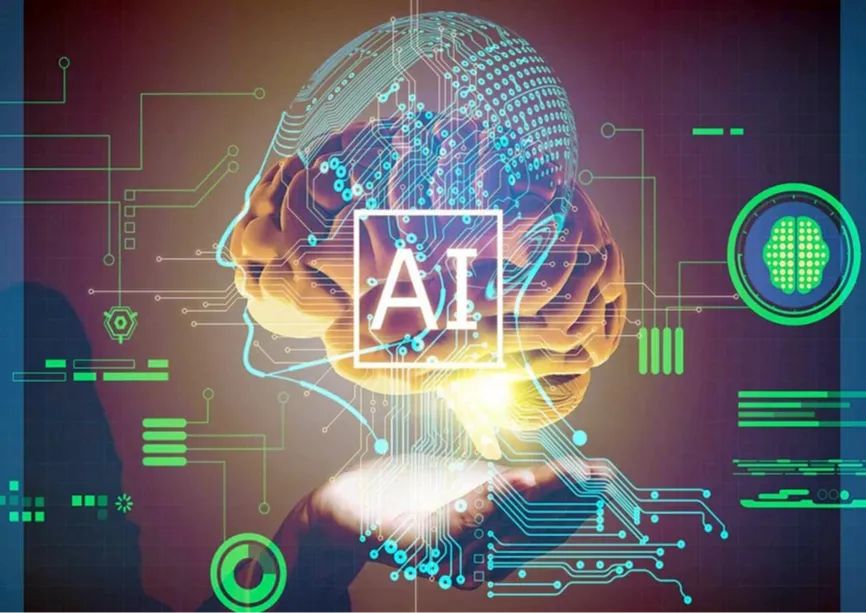
The history of Artificial Intelligence (AI) adoption in the military is a compelling narrative unfolding against the backdrop of technological evolution, geopolitical shifts, and the relentless pursuit of military supremacy. The journey commenced in the mid-20th century when the seeds of AI were planted in endeavours to automate complex computations and data analysis.
As the Cold War unfolded, intelligence agencies, particularly the Central Intelligence Agency (CIA) handling foreign intelligence for the United States (US), alongside its counterpart, the National Security Agency (NSA), embraced rudimentary forms of AI. During this period, the foundation for contemporary natural language processing (NLP) techniques was laid through the machine translation of foreign language documents. The late 1950s saw the advent of early AI systems such as the general problem solver (GPS), designed to emulate human-like problem-solving capabilities. Concurrently, the US Department of Defense initiated projects like the Defense Advanced Research Projects Agency (DARPA) to delve into the military applications of AI, paving the way for more ambitious developments in the ensuing decades.
The late 1950s saw the advent of early AI systems such as the general problem solver (GPS), designed to emulate human-like problem-solving capabilities.
Advancing into the early 21st century, a significant shift occurred driven by progress in machine learning and data analytics. Unmanned Aerial Vehicles (UAVs), commonly referred to as drones, became essential instruments for surveillance and reconnaissance, now featuring advanced AI capabilities. Empowered by extensive datasets, AI algorithms assumed a central role, analysing information, identifying patterns, and notably enhancing situational awareness on the battlefield. The incorporation of AI into military applications progressed into a broader, more refined, and integral facet of contemporary warfare.
The notion of AI-enabled warfare has become increasingly significant. This encompasses a range of technologies, including autonomous systems, swarming drones, and machine learning algorithms for predictive analysis. Ground vehicles equipped with AI for autonomous operations have been designed to undertake tasks spanning logistics to reconnaissance, particularly in challenging environments. Nations globally are engaged in a competitive pursuit to develop and incorporate the latest emerging technologies into their arsenals. India appears to be cognizant of this trend and is now actively making concerted efforts not only to partake in this global race but potentially take a leadership role in it.
India's AI Ambitions
The Indian Armed Forces are set to leverage AI across various domains, revolutionising threat assessment, logistics optimisation, cybersecurity, and surveillance with AI-powered UAVs. Similar to AI's disruptive impact on the economy, these military advancements are poised to redefine the landscape in the near future.
The Ministry of Defence (MoD) has committed an annual budget of INR 100 crore (US$12 million) for the next five years to the Defence Artificial Intelligence Project Agency (DAIPA). This funding will support AI projects, infrastructure development, data preparation, and capacity building. In a recently released document, it is emphasised that the Indian defence industry is making strides, positioning the armed forces among the world's most advanced. This collaborative effort involves public and private sectors, research organisations, academic institutions, start-ups, and innovators, ushering in a new era of cutting-edge AI innovation. Unique products have emerged in areas such as data, logistics, surveillance, and weaponry. Among several significant developments is the creation of the enhanced collaborative autonomous rover system (ECARS) unmanned ground vehicle (UGV), a versatile modular platform powered by AI for multi-terrain movement. Its perception and navigation modules enable full unmanned control, enhancing operational capabilities and mitigating risks in critical missions, ultimately ensuring the safety of our forces.
Among several significant developments is the creation of the enhanced collaborative autonomous rover system (ECARS) unmanned ground vehicle (UGV), a versatile modular platform powered by AI for multi-terrain movement.
Another groundbreaking advancement emerges with the development of cognitive radar, addressing challenges faced by present-day radars in ensuring a robust detection mechanism within dynamic environments. The Defence Research and Development Organisation (DRDO) Young Scientist Laboratory, specialising in cognitive technologies, tackles these challenges through the application of deep neural network and reinforcement learning methodologies. This amalgamation of cutting-edge technologies signifies a notable leap forward, showcasing a commitment to innovation and mastery over radar applications.
AI's transformative potential
The impact of emerging technologies extends beyond commercial jobs, making a significant imprint on military practices. Several technological revolutions often find their genesis with military considerations in mind. The wealth of data and the development of AI models hold tremendous potential to enhance decision-making across various domains within the armed forces. For instance, the strategic approach known as A2AD (anti-access/area denial) stands to gain substantially from these advancements. A2AD employs a sophisticated blend of cutting-edge technologies and tactical manoeuvres to restrict an adversary’s access to specific areas, posing significant challenges to their operational effectiveness within defined regions. This concept intricately intertwines with discussions on modern warfare and defence strategies, poised to be influenced by the ascent of emerging technologies such as AI.
The wealth of data and the development of AI models hold tremendous potential to enhance decision-making across various domains within the armed forces.
The intense global competition to bolster military capabilities is striking. Both the US and China are directing increasingly substantial resources towards their armed forces, placing a distinct emphasis on investments in the development and integration of AI into military practices. In this dynamic landscape, India, driven by aspirations, rapid growth, and its emerging role as one of the leaders in the global South, cannot afford to fall behind. China's People’s Liberation Army (PLA), as an example, has made substantial investments in AI technologies, showcasing a dedicated commitment to incorporating AI into its defence capabilities. For India to sustain its standing and make meaningful contributions, active participation in the AI race is imperative, potentially positioning itself as a leader in shaping the future of military technologies globally. More crucially, it is paramount for India to secure its national defence, especially amid rising threats from neighbouring regions.
Additionally, a significant recent development lies in AI in cyber warfare. AI-driven tools and algorithms play a pivotal role in detecting and responding to cyber threats, fortifying military networks, and safeguarding critical infrastructure. The capacity of AI to analyse extensive volumes of data in real-time serves to bolster the military's resilience against the ever-evolving landscape of cyber threats.
The history of AI in the military is a complex story, ranging from early computation to today's focus on machine learning and autonomous systems. AI has significantly changed military operations globally, with nations investing heavily in research to stay technologically advanced. While discussions about ethical standards for AI affecting future jobs are widespread, collaboration in military AI development remains unclear. However, this doesn't signify a dead end. The US has released a declaration featuring non-legally binding guidelines that highlight best practices for the responsible military use of AI. These principles underscore crucial aspects such as the audits of military AI systems, explicit and well-defined use cases, rigorous testing and evaluation throughout their lifecycle, the ability to detect and prevent unintended behaviours, and a senior-level review for high-consequence applications. The future of AI development is unclear, given the unprecedented scale and impact of the innovation, making regulation challenging. Embracing change seems evident and imperative, especially for the armed forces.
The US has released a declaration featuring non-legally binding guidelines that highlight best practices for the responsible military use of AI.
In hindsight, it's clear that the internet revolutionised the armed forces by providing extensive access to information. Similarly, AI could be seen as having a comparable impact. The internet granted access to vast amounts of data, and now, with AI, this data can be processed into insights at a remarkable pace. The ongoing narrative of AI in the military involves finding a balance between fostering innovation and seeking military dominance.
Sauradeep Bag is an Associate Fellow at the Observer Research Foundation
The views expressed above belong to the author(s). ORF research and analyses now available on Telegram! Click here to access our curated content — blogs, longforms and interviews.




 PREV
PREV


